Conquering the Cosmos: A Tribute to Our Spring 2025 Galaxy Challengers!
Honouring the Dedication of Our D2 & D3 Astrophotography Community
What an incredible journey we've shared over the past few months! From April through June 2025, the Dwarflab D2 & D3 communities embarked on an ambitious quest: The Spring Galaxy Challenge. Armed with our D2 and D3 telescopes, we set out to capture some of the most iconic and elusive galaxies gracing the spring night sky.
For all our participants and the curious, download your copy of the poster!
Interested in a poster print you can hang? Let me know, and I will place it in the upcoming DwarfVision shop to purchase!
This wasn't just a casual stargazing session; it was a true test of skill, patience, and perseverance! Every challenger, from seasoned astrophotographers to enthusiastic newcomers, faced a unique set of hurdles. This post is a tribute to your dedication and the stunning results you achieved against all odds.
The Challenge We Faced: More Than Just Faint Fuzzies!
Beyond the technicalities of capturing faint light from billions of light-years away, the Spring Galaxy Challenge threw some formidable curveballs our way:
The Relentless Clouds: For many, clear skies were a rare luxury. Weeks of overcast conditions meant missed opportunities and frustrating waits.
The Sneering Moon: Our celestial neighbour, the Moon, often became our biggest adversary. Its bright glare, especially during its full phases, washed out the faint details of galaxies, making successful imaging incredibly difficult for extended periods.
The Diminishing Nights & Northern Struggle: As we edged closer to the summer solstice, the nights grew progressively shorter. For our participants in more northern latitudes, this meant less precious dark time. For our most northerly participants, the challenge became a race against the sun, as by late May and early June, astronomical twilight barely ended, or didn't end at all. This meant the sky never truly got dark enough for deep-sky imaging, effectively halting the challenge for many in northern regions and making every captured photon a hard-won victory.
The Southern Horizon: Many of the prime Spring Galaxy targets, while in the northern celestial hemisphere, were still relatively low on the horizon for those observing from higher northern latitudes. This meant battling increased atmospheric extinction, light pollution, and poorer "seeing" conditions, further complicating captures.
The Canadian Wildfire Haze: As if the natural elements weren't enough, smoke plumes from the Canadian wildfires unfortunately drifted across vast swathes of North America and beyond. This atmospheric haze significantly reduced transparency, scattering light, and made it incredibly difficult to gather enough signal from distant galaxies.
Despite these formidable obstacles, you persevered! Let's have a look at the incredible targets you tackled and some of the specific challenges they presented for our Dwarf telescopes!
Spotlight on Our Galactic Targets & Participant Captures:
Here's a closer look at the galaxies on our list and what made them particularly challenging for Dwarf 2 and Dwarf 3 users ( With images from our challengers! ):
Whirlpool Galaxy (M51 & NGC 5195): A stunning interacting pair. While relatively bright, capturing the delicate spiral arms and the bridge between the two galaxies required significant integration time and careful processing to bring out the faint details with a Dwarf.
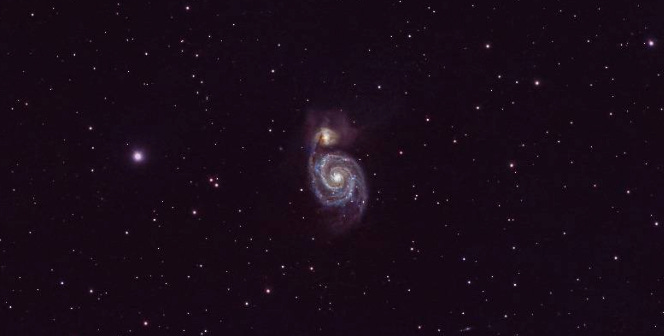
Image Credit - Nicole Hartman
Sombrero Galaxy (M104): Known for its dramatic dust lane. M104 is quite bright, making it a good target, but resolving that thin dust lane effectively with the Dwarf's aperture demanded excellent focus and steady conditions.

Image Credit - John Topolski Markarian's Chain: This famous string of galaxies in the Virgo Cluster is a true test. While some members (like M84 and M86) are bright, many others (e.g., "The Eyes" NGC 4438 & NGC 4435, NGC 4461, NGC 4473, NGC 4477, NGC 4458) are significantly fainter. Capturing the entire chain in one field of view, while getting enough detail on the fainter members, was a monumental task for the Dwarf's fixed wide field.

Image Credit - Steve Kozloff Leo Triplet (M65, M66, NGC 3628): Another iconic group. M65 and M66 are relatively straightforward, but NGC 3628 (the "Hamburger Galaxy") is an edge-on spiral with a prominent dust lane that is much fainter and more challenging to resolve with the Dwarf, requiring longer exposures.

Image Credit - Chayiana Morgan Bode's & Cigar Galaxy Group (M81 & M82): A classic interacting pair and generally bright targets. These were excellent for the Dwarf, offering a chance for impressive wide-field captures, though bringing out the subtle red hydrogen-alpha regions in M82 (Cigar) still required good integration.

Image Credit -Hari Nair Antennae Galaxies (NGC 4038 & NGC 4039): These colliding galaxies are visually spectacular but notoriously faint. Capturing their distorted shapes and faint tidal tails with a Dwarf 2 or 3 required exceptionally dark skies and very long exposure times, pushing the instrument's limits.
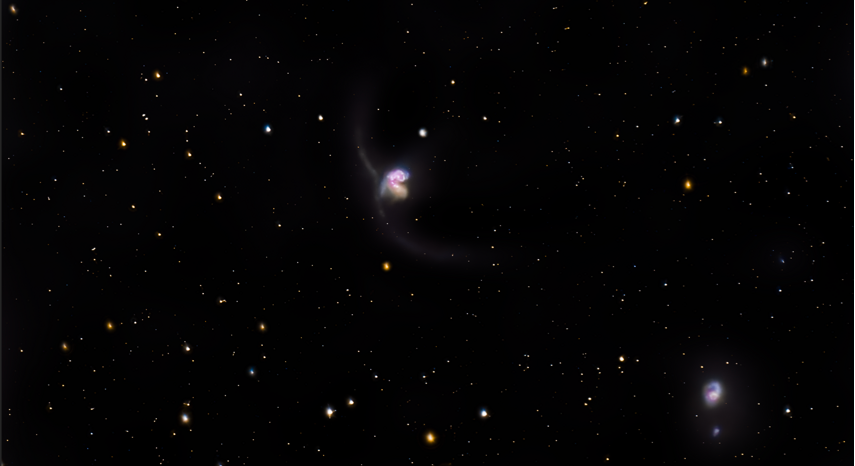
Image Credit - Duncan Pond Cat's/Croc's Eye Galaxy (M94): A beautiful spiral with a bright inner ring. M94 is a good Dwarf target, but revealing the faint outer ring required extended exposure and careful processing.

Image Credit - Antoine Weis Sunflower Galaxy (M63): A grand spiral. M63 is a relatively bright galaxy, making it a rewarding target for the Dwarf, allowing for good detail in its spiral arms with sufficient integration.

Image Credit - Steve Kozloff Virgo's Core (Area 1: M58, M59, M60, & NGC 4647): Dominated by elliptical galaxies. M60 is quite bright, but M58, M59, and its companion NGC 4647 are fainter. Capturing multiple galaxies in one frame and getting good detail on each was a challenge.

Image Credit - Rahm Menon Virgo's Core (Area 2: M90, IC 3583, & satellites): M90 is a spiral, while IC 3583 is an irregular dwarf. M90 is manageable, but IC 3583 and its faint satellites were particularly challenging for the Dwarf due to their low surface brightness.

Image Credit - Nancy Schwartz Edge-On Pair: M108 & the "Owl Nebula" (Planetary M97): An interesting pairing of an edge-on spiral and a planetary nebula. M108 is a good target, but the Owl Nebula (M97) is small and requires good resolution to show its "eyes" even though it's relatively bright.

Image Credit - Amy Renae Pinwheel Galaxy (M101): A vast, face-on spiral with low surface brightness. M101 is a notoriously difficult target for smaller telescopes like the Dwarf due to its diffuse nature. It required incredibly long integration times and pristine dark skies to bring out its faint spiral arms.

Image Credit - Nicole Hartman Galaxy Group: M106 & nearby NGC 4217: M106 is a bright spiral, but its companion NGC 4217 is a much fainter, edge-on galaxy. Capturing both with good detail was a solid challenge.

Image Credit - Nicole Hartman The Water Bug Galaxy (NGC 5033) is a relatively faint and diffuse spiral galaxy. This was a challenging target for the Dwarf, demanding patience and dark conditions.

Image Credit - Nancy Schwartz M99 The (Coma) Virgo Cluster Pinwheel: Another face-on spiral in the Virgo Cluster, similar to M101 in its diffuse nature. Like M101, it presented a significant challenge due to its low surface brightness, requiring a very long exposure.
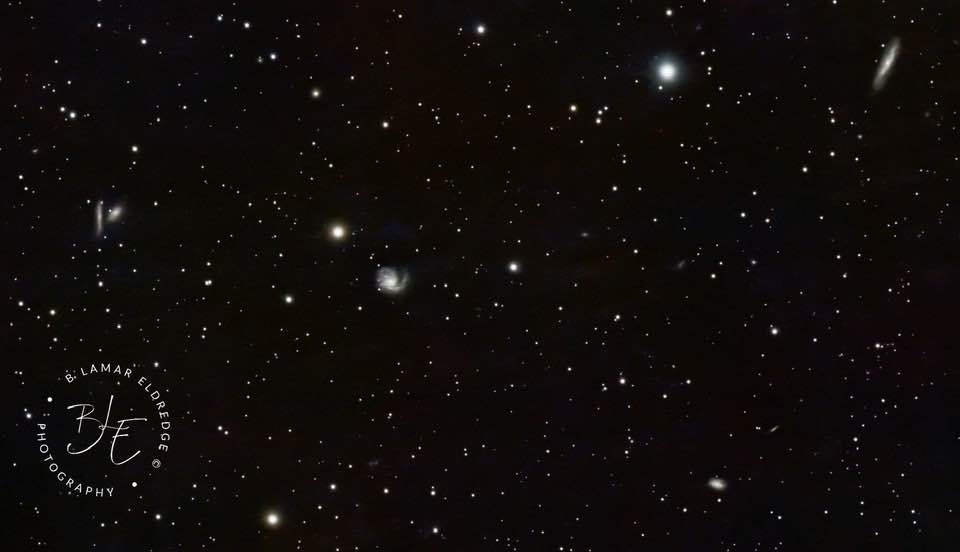
Image Credit - LaMar Eldredge M100 The Mirror Galaxy: A bright, face-on spiral. M100 was a rewarding target for the Dwarf, allowing for good detail in its spiral arms with sufficient exposure.
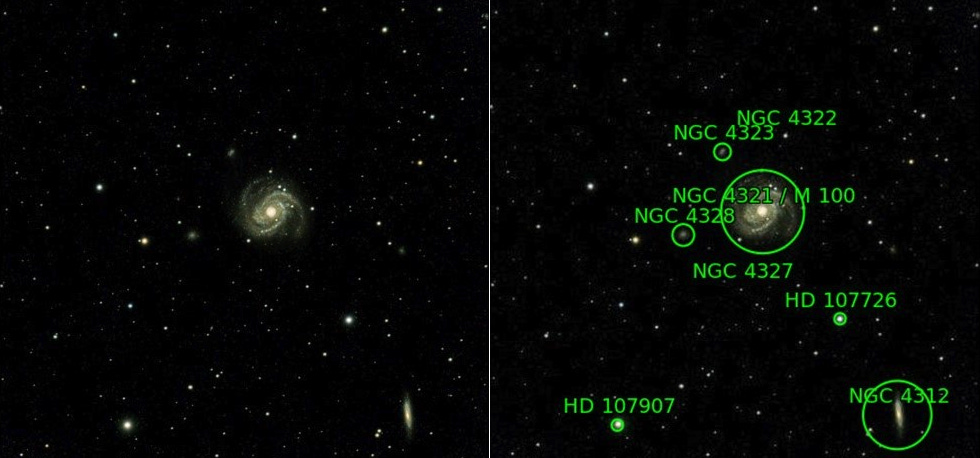
Image Credit - Chip Cody C38 (NGC 4565) The Needle Galaxy: A spectacular edge-on spiral. This was an excellent target for the Dwarf, offering a chance to capture its dramatic dust lane and thin profile.

Image Credit - LaMar Eldredge Draco Triplet (NGC 5985, NGC 5982, NGC 5981): A group of three galaxies in Draco. These are generally fainter and more distant than many other targets, making them a significant challenge for the Dwarf, especially NGC 5981 (edge-on).

Image Credit - Antoine Weis NGC 4631 (The Whale) & NGC 4656/57 (The Hockey Stick Galaxy): A fantastic interacting pair. These are relatively bright and well-suited for the Dwarf, offering a chance to capture their unique shapes and subtle interactions.

Image Credit - Rahm Menon M64 The Black Eye Galaxy (NGC 4826): Famous for its prominent dark dust lane. M64 is a bright and rewarding target for the Dwarf, with the dust lane being a key feature to capture.

Image Credit - Mike Lamberson C12 The Fireworks Galaxy (NGC 6946): A beautiful face-on spiral with high star formation. As a bonus target, it's known for being a bit more challenging due to its location near the galactic plane (which can mean more foreground stars and dust) and its diffuse nature, but its brightness makes it a rewarding capture.
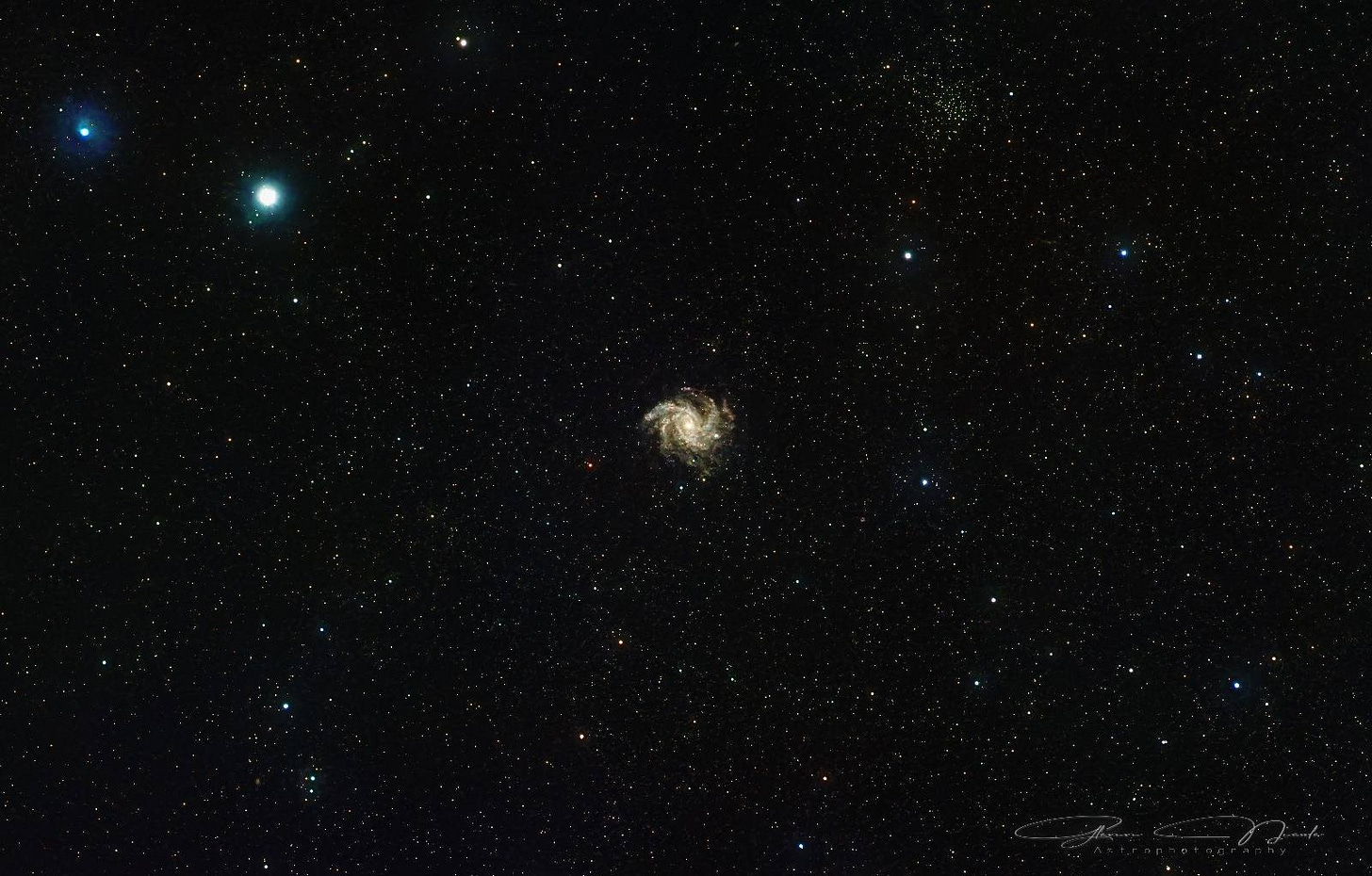
Image Credit - Nicole Hartman
To all our participants, whether you bagged all the targets, just a few, or learned more about your Dwarf telescope and the night sky, you are all Rising Stars! Your dedication to exploring "Our Collective Galaxies" is truly inspiring. Thank you for making the Spring Galaxy Challenge a memorable and educational experience for the entire Dwarf2&3 community!
Stay tuned for more cosmic adventures!





